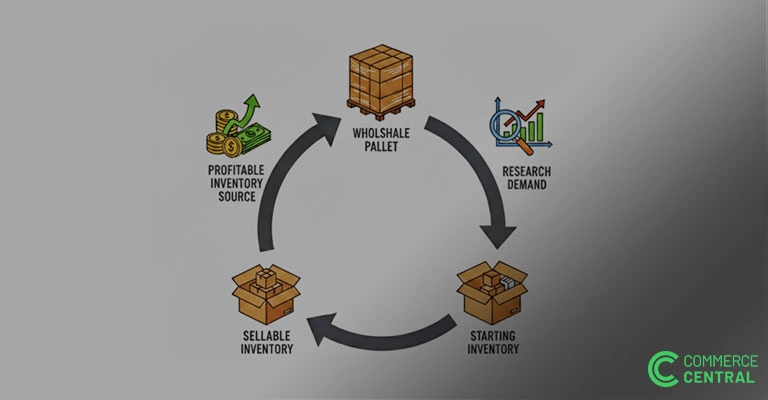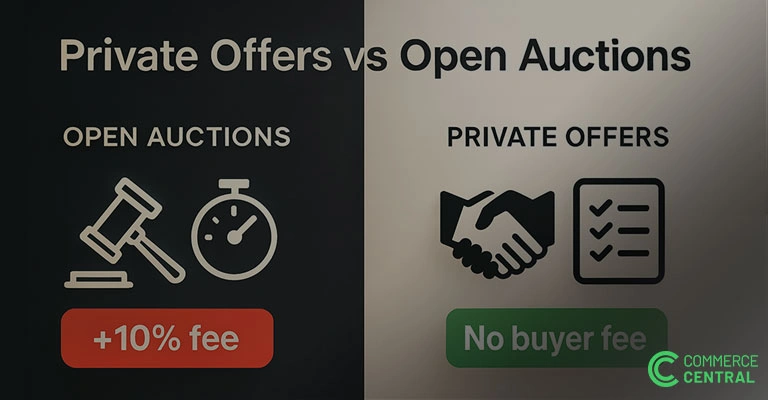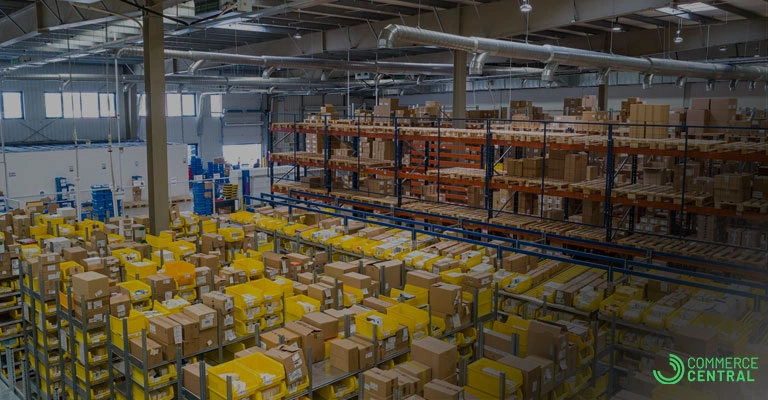
Wholesale Pallets for Sale: A Playbook for New Resellers
Find out how to source products smartly! Our wholesale pallets for sale guide helps new resellers buy confidently and start their eCommerce journey right.

When looking into sourcing inventory to sell, most gravitate to what they know works. Often, deals are left on the table due to perceived bias. One of these is refurbished vs. brand new. The traditional wisdom is that, when buying electronics, brand new is better than refurbished. However, over time, this advice is not always accurate; one can argue that a refurbished electronic is as good as a new one. With the ever-changing landscape of customer behavior toward buying secondhand and returned goods, refurbished electronics in the B2B resale area can deliver margin and cash efficiency, especially when you control testing and grading. Or you can source it from a trusted refurbisher to accomplish this without adding headcount for all the testing and grading. That’s not to say brand new doesn’t matter. It’s all up to your needs and the customers who buy from you. Use the decision framework + checklist below to help you choose if refurbished or brand-new electronics make sense for you.
Higher gross margin potential.
You’re buying functional value, not retail packaging, and paying for what matters. If you have a reliable refurb partner, run consistent diagnostics, and apply a clean grading standard, you can lift the average selling price. With a warranty, you can also place consumers' minds at ease when they buy refurbished.
Supply flexibility.
Refurb supply can come from customer returns and overstock; this could mean a steady, diversified inventory. That smooths out feast-or-famine cycles on brand-new SKUs and keeps your pipeline stocks during peak demand.
Defensible pricing.
A variety of grade-based price bands lets you serve multiple B2B segments.
Sustainability story. Many enterprise and retail buyers prefer lower-carbon, circular options. If you can document testing, grading, and a simple warranty, refurb earns trust while checking ESG boxes.
Best-fit categories: phones, laptops, tablets, wearables, small appliances, pro tools.
No repair team needed.
If you do not have people or tools to test and fix items. The additional investment capitals need would out weight the higher margin you will get sell refurbished. So new stock would still be most ideal as you can run a leaner team.
Channel customer preferences
Depend on your channels, customer are looking for specific conditions. But overall “new” leave no room for interpretation and have higher sell through. While refurbish need additional thing like grading, test, and warranty to move product.
Speed over margin.
Lastly speed, brand new stuff tend to move quicker then refurbish but at a cost to your margin.
Where it fits best
How to run it
Return liquidation
Great for refurb programs. You’re buying customer returns, overstocks or closeout sales, if you have a partners or set up you can conduct testing and grading. With an added warranty to ease consumers mind you can unlock stream of inventory.
Wholesale liquidation pallets
Useful when you want volume at a predictable cost per unit. When buying liquidation pallets always consider if it manifested and check for line items. Don’t be fool by a few “treasure” line item and ignored the what else in the lot. Do your research and double check if the deal is worth it
Weeks 1 to 2:
Pick two SKUs where your resale channel allow both products. Buy a small lot of both refurbished and new units. Document your assumptions for ASP, defect rates, and days to sell.
Weeks 2 to 6:
List both with clear copy, photo standards, and warranty terms. For refurb, if self test and grading, publish your grading rubric and battery or component thresholds if relevant. If done by a trusted third party partner have their grading rubric available.
Week 7+:
Compare the results. Look at the KPI for both units. KPIs like 30 day sell through, cash conversion days, gross margin per unit, defect and RMA rates, and dispute rates. This test should paint a clear picture. From this data point you can make purchasing decisions in the future if you should buy refurbished, new or a mixture.
There is no one rule that fits every needs.The only way to know for sure it run a test pilot, refurshbished good are as good as new items in term of functionality. Often time the lower price point are attractive to consumer, if you can address the reliability issues. That were a clear warranty come to play. There is no singleplay books that will work for everyone, you need to match the path to your channels, your capacity, and your cash needs. When you can prove your diagnostics, grading, and warranty, refurbished can out earn new in many categories. When you need clean compliance and speed, brand new is the safer lane. Start with a small test, measure what matters, and let the numbers choose for you.
Is refurbished as reliable as new? With a trusted partner who can show consistent diagnostics and transparent grading. Refurbished are as reliable as a new product, for ease of mind look for a clear warranty. That will guaranteed if anything does goes wrong you are protected.
When should I consider refurb? This depends on your resell channels and consumers base. If you target consumer only buy new product then avoid refurbished products as it could detract them from shopping with you. However, it worthwhile to test a small pilot of refurbished products this could potentially open you up to a new cohort of consumers that your didnt buy your product due to price points.
Can I mix both? Yes. You should test what work best for you, like the point above there is not harm in trying a small test pilots of a mix new and refurbished. Keep track of sell through margins and adjust for future buy.

Find out how to source products smartly! Our wholesale pallets for sale guide helps new resellers buy confidently and start their eCommerce journey right.

Offers or open auctions - which delivers better results? Explore how invite-only bidding can outperform public auctions in achieving better deals and faster sales

Protect your investment with these 7 liquidation red flags. From fake manifests to hidden prices, discover what savvy resellers check before every purchase.
Join the only private surplus distribution platform built for trusted Buyers and Sellers.